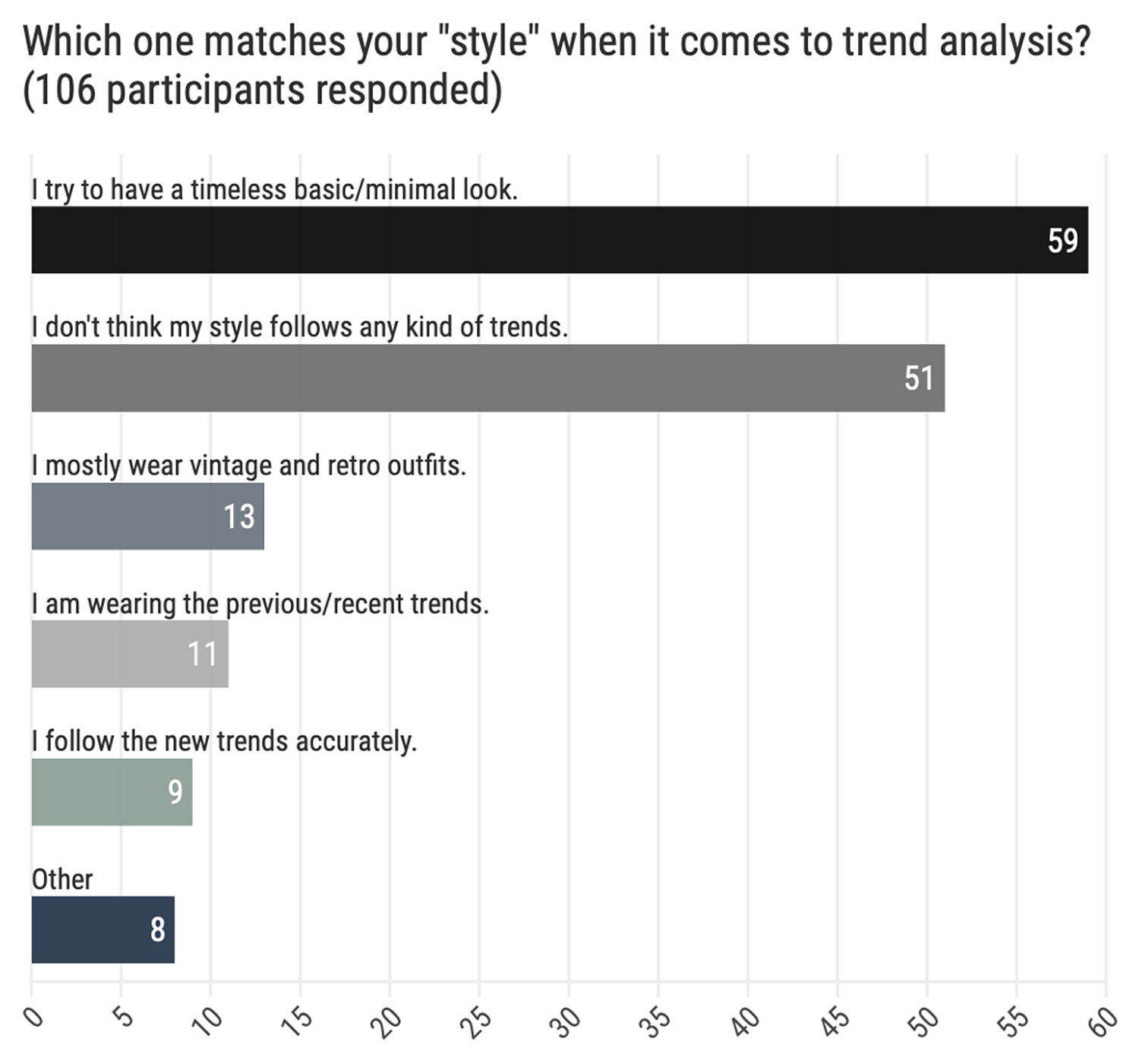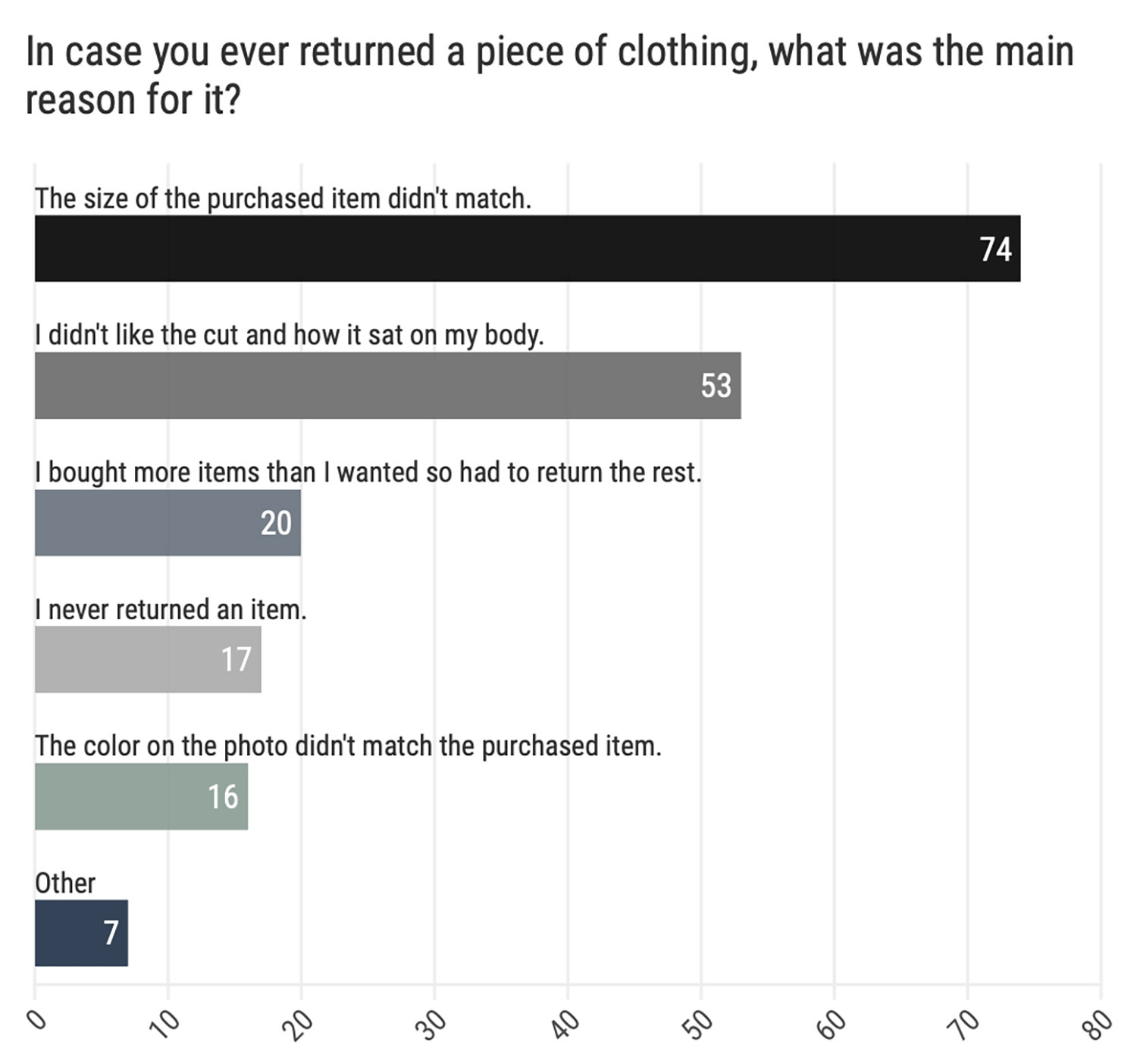While these days it’s not new to see products developed with themes of “sustainable fashion”, “organic fabric” or “eco-friendly”, it is important to pay attention to ethical and conscious fashion linked to “shopping behavior” of the wearers too. Following the subject, some phenomena like accessible clothing, online shopping and compulsive shopping behavior are threatening the positive actions done by people who are aware of fashion industry's side effects. This thesis project focuses on raising awareness of how a change in shopping behavior can have positive impacts.
By this research project, we're trying to gain a deeper understanding through:
「 Research Question: How can increasing product durability serve as a way of tackling the fast fashion movement? 」
Introduction
Keyword map
The relationship between everybody’s wardrobe and themselves can be a complicated one, leading us to always asking ourselves if we have enough styling options, what if our clothes don’t match, do we need to buy more?
This can lead to increasing the amount of purchased garments, which sets the fast fashion machine in motion, as when it comes to fast fashion, the shopping behavior can be as important as the production. The influence that the fast fashion market has on the way we consume the products has far-reaching consequences that we may not be aware of. Therefore, this problem needs to be approached with a systemic and interdisciplinary approach.
Research Approach
Research area of the project
In a broad perspective, the research starts with a concern, something that the researcher struggles to know more about and gain more knowledge. For this project, we can position the research in the intersection of durability, sustainability and modularity. Since fashion is one of the Interdisciplinary fields of design, doing a research on it needs a plan and division by keywords and their connection to be able to have a zoomed-out insight. As the first step in jumping into the topic with, I selected keywords and linked them to each other to create a Giga-map (System Oriented Design).
Research Development Plan
Thesis structure: Exploring fast fashion’s background, gathering data (survey and interview + market and material research), prototyping and testing
Literature Review
Global Fiber Production In Mt. (© Preferred Fiber & Materials Market Report 2021)
Political & financial reasons behind fast fashion:
The business model behind fast fashion allows for high profits because of cutting costs on production methods and sacrificing ethical working conditions (Fletcher, 2016). According to EPRS (2020) the main supplier of clothing for the European Union used to be China, but with China’s economic development, wages started to rise leading to rise of overall production costs. Therefore, production started to shift towards lower income countries, mostly located in south and south-east Asia: India, Bangladesh and Myanmar.
「 the increasingly complex nature of global fashion supply chains combined with growing global inequalities has helped create an environment where exploitation can thrive. Stringer et al. (2022) 」
Key Fashion Impacts (© world economic forum 2020)
Quantity of the market, quality of the garment:
The increase of fashion sales and production is linked to the decrease in garment quality. Businesses have made an effort to decrease expenses and simplify their supply chains, resulting in a drop in the cost of clothing in comparison to other consumer products. Compared to 2000, the average number of clothing collections per year has more than doubled for all European apparel companies (Remy, Speelman, Swartz, 2016).
The value hill framework (Achterberg, E, Hinfelaar, J & Bocken, N, 2016)
Shopping behavior: The presence of fast fashion has influenced the way people shop and led to increased consumption of fashion. Because clothing is worse quality, it degrades faster and customers tend to buy it more often (Fletcher, 2016). When it comes to sustainable fashion choices, consumer knowledge and awareness of sustainable apparel influence their purchasing decisions but there are limitations to their decisions as the sustainable fashion market is complex (Patwary et al., 2023)
「 Sometimes it’s about how you treat the item you bought, the brand itself might not be that ethical but the way you keep and use it for a long time you force it to be. So in this case shopping behavior can even change the identity of a brand. (Based on craft of use, Fletcher, 2016) 」
Emotional attachment: Can be defined as the emotional connection developed towards objects that goes beyond functional or aesthetic qualities. It is based on identity, narrative and time (Chapman, 2015). Emotional attachment is valuable, as it can increase the longevity and durability of products. When the users are emotionally attached to objects, they are more likely to keep them and this can lead to reducing consumption of new products, and therefore - waste. Understanding this can help to create products that are more sustainable, meaningful, and emotionally resonant (Chapman, 2015).
「 People do not throw away things for which they feel emotional attachment. (Karana, Hekkert and Kandachar, 2014) 」
「 Fast fashion is not free. Someone, somewhere is paying. Lucy Siegle quoted by UCC (2021) 」
User and Market Research
Survey: A survey with 107 participants, mostly living in Berlin and Dessau was conducted from 30th of March 2023 to 22nd of April 2023. The age range of participants is from 20 to 40 with an average of 28.2 years old. The survey scheme is mentioned below:
Survey analysis: The survey results were later analyzed and are depicted on two types of charts: the questions with the possibility to choose multiple options are visualized with a bar chart (based on the number of participants) and the other ones are shown as pie charts (percentage). Some further analysis is presented below:






Brand DNA: For the market research section of this thesis, the Brand DNA tool was utilized to analyze the core attributes, identity and personality of brands. In another word, this framework extracts distinct elements that make up a brand's essence.
Opportunities
〔 To check the rest of this project as "Part 2: Research through design" click on this link: Part2 〕
This is a summarized version of my master thesis I have done in 2023, for more details,
feel free to send me a message.











